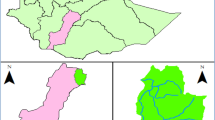Abstract
Achieving a balance between land development and environmental protection has always been a challenge for many policy makers around world. The purpose of our project is to build a management system for protected drinking water source watersheds where land development is restricted for reasons of water health and drinking safety. Ideally under this proposed management system, land development is not considered taboo, but can proceed with preconditions. We first divided a protected area into two protection zones for different types of regulations. In the first zone, any type of land development is strictly prohibited, as the currently dominant philosophy for watershed protection. In the second zone, development is allowed but only when a permit with more environmental protection requirements is granted by a responsible governmental agency. In response to land development regulations, we proposed three compensation programs to the landowners of the protected watersheds to reduce their resistance on the inclusion of their properties into the designated protected areas. How to delineate and divide a protected area for different levels of regulation is thus a concern of all parties involved in management and compensation programs. In this paper, we demonstrate a case study on the Kao-** River Watershed, a subtropical watershed with highly heterogeneous land uses and a wide range of elevations in southern Taiwan. Through this study, we empirically examined the feasibility of the proposed management and compensation schemes. The targeted water pollution abatement goals were regarded as the basis of determining the area requirements for these two types of protection zones. Under this principle, the Arc/View GIS software and two water quality prediction models, QUAL2E and GWLF, were repeatedly applied to simulate the effects of water pollution reduction with different acreage of development-restricted areas. The optimal areas of the protected zones from the modeling results were further used to estimate the amounts of compensation fees based on the three following mechanisms: land banking, conservation easement, and transferable development rights.
Similar content being viewed by others
References
Brown LC, Barnwell TO (1987) The enhanced stream water quality models QUAL2E and QUAL2E-UNCAS (EPA/600/3-87-007). US Environmental Protection Agency, Athens, 189 pp
Chang N, Shaw D, Wen C, Hsu M, Yang L (1999) Management and optimized strategy for industrial wastewater pollution abatement in watersheds. Final Report to Taiwan Environmental Protection Administration, Taipei, Taiwan (in Chinese)
Chapra SC, Pelletier GJ (2003) QUAL2K: a modeling framework for simulating river and stream water quality: documentation and users manual. Civil and Environmental Engineering Department, Tufts University, Medford
Ciriacy-Wantrup S (1964) The ‘new’ competition for land and some implications for public policy. Nat Resour J 4:252–267
Ciriacy-Wantrup S (1968) Resource conservation: economics and policies, 3rd edn. University of California Press, Berkeley
Dabral PP, Baithuri N, Pandey A (2008) Soil erosion assessment in a hilly catchment of north eastern India using USLE, GIS and remote sensing. Water Resour Manage 22(12):1783–1798. doi:10.1007/s11269-008-9253-9
Haith D, Wu R (1989) GWLF: generalized watershed loading functions—user’s manual. Cornell University, Dept of Agricultural Engineering, Ithaca
Johnson AW, Ryba DM (1992) A literature review of recommended buffer widths to maintain various functions of stream Riparian areas. King County Surface Water Management Division
Naik MG, Rao EP, Eldho TI (2009) Finite element method and GIS based distributed model for soil erosion and sediment yield in a watershed. Water Resour Manag 23(3):553–579. doi:10.1007/s11269-008-9288-y
Rawls J (1971) A theory of justice. Harvard University Press, Cambridge
USDA–SCS (US Department of Agriculture–Soil Conservation Service) (1972) National engineering handbook. Part 630 hydrology, Section 4. US Government Printing Office, Washington, DC
US EPA (US Environmental Protection Agency) (2004) Water quality models: enhanced stream water quality model, Windows (QUAL2E) at http://www.epa.gov/waterscience/QUAL2E_WINDOWS/. Accessed 25 June 2004
Walter MT, Archibald JA, Buchanan B, Dahlke H, Easton ZM, Marjerison RD, Sharma AN, Shaw SB (2009) New paradigm for sizing riparian buffers to reduce risks of polluted storm water: practical synthesis. J Irrig Drain Eng—ASCE 135(2):200–209. doi:10.1061/(ASCE)0733-9437(2009)135:2(200)
Wischmeier W, Smith D (1965) Predicting rainfall-erosion losses from cropland east of the Rocky Mountains. Agriculture Handbook 282. US Department of Agriculture—Agricultural Research Service, Washington DC
Author information
Authors and Affiliations
Corresponding author
Rights and permissions
About this article
Cite this article
Lin, Ch., Huang, Th. & Shaw, D. Applying Water Quality Modeling to Regulating Land Development in a Watershed. Water Resour Manage 24, 629–640 (2010). https://doi.org/10.1007/s11269-009-9462-x
Received:
Accepted:
Published:
Issue Date:
DOI: https://doi.org/10.1007/s11269-009-9462-x




